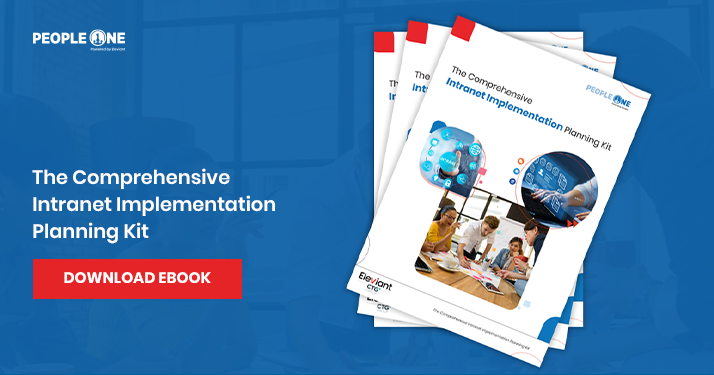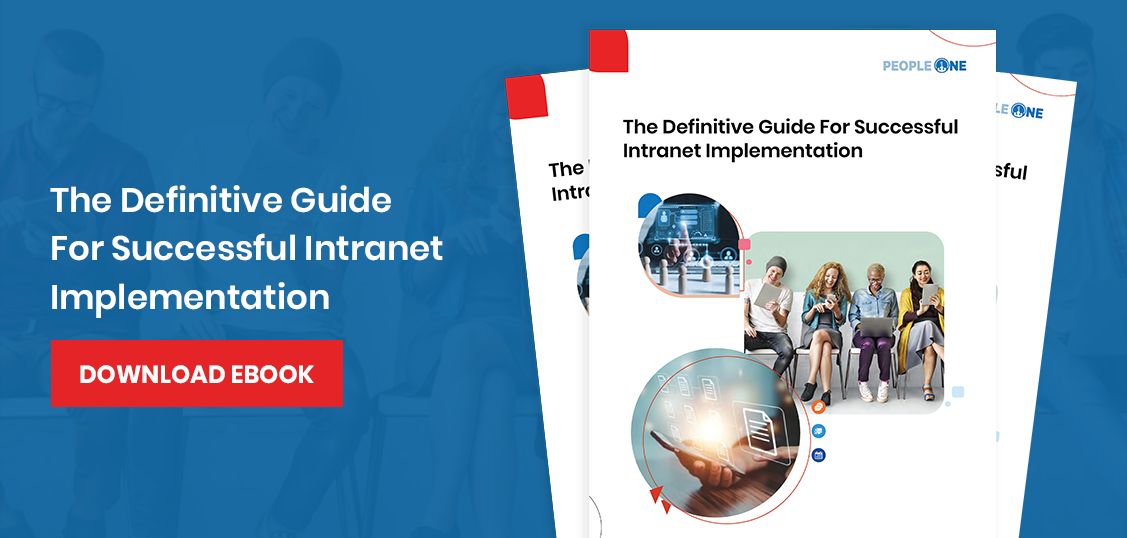Resources > Blogs
AI’s Role in Intranet Success: A Strategic Approach to Content Creation
31-Jan-2024
Mohammed Umar

Content is the lifeblood of an intranet. Effective content keeps your intranet alive by giving people more reasons to engage.
Relevant and diverse content, including news articles, videos, and other multimedia resources, lifts the intranet experience and makes them want to return for more. A successful intranet relies on compelling content to create an environment where employees are well-informed and motivated, ultimately contributing to the organization’s success and productivity.
How Ineffective Content Fails Your Intranet?
Ineffective content is a slow poison to your intranet. When your content is dated and stale, the intranet loses its credibility, and the users become disengaged and lose trust in the platform’s relevance. Additionally, irrelevant content hampers effective collaboration, as employees may base actions on outdated or inaccurate information. To maintain the intranet’s efficacy, it is crucial to prioritize content relevance, regular content audits, and a thoughtful content strategy.
Can Artificial Intelligence Come to The Rescue?
Generative AI stands poised to revolutionize intranet ecosystems, providing a spectrum of benefits for content creators and administrators. AI tools can play an important role in intranet content management, addressing specific challenges and enhancing overall functionality.
Efficient Content Creation:
AI is a valuable aid to content creators, fastening the content creation process by assisting in generating content ideas and initial drafts for blog articles, reports, or knowledge base entries. As a result, AI can accelerate content delivery, allowing creators to focus on refining and infusing human perspectives. The symbiosis between AI and content creators ensures faster and constant content for your intranet.
Enhanced Content Accessibility:
Intranets often house an overwhelming volume of lengthy corporate articles and policies, creating challenges for users seeking quick information. AI can generate concise summaries of important content like company policies, which significantly improves accessibility for the users to grasp the essence of extensive documents.
Content Translation:
An organization with offices across the globe with employees who speak different languages can use AI tools for content translation to convey internal communications accurately in employees’ preferred languages.
AI-Generated Visual Content:
How to Get the Best Out of AI Tools?
Set Clear Content Goals:
Start by defining your content goals. Determine whether you aim to inform, entertain, or persuade your audience. Clearly outlining your objectives will guide your choice of AI tool and the prompts you use, ensuring they align with your goals.
Craft Precise Prompts:
A critical factor in successful AI-generated content is a well-crafted prompt. The more specific and detailed your prompt is, the better the AI tool will understand and fulfill your requirements. Specify the topic, desired tone, writing style, and the preferred length of the content you want the AI to generate.
Carefully Review and Edit:
Double Check for Plagiarism:
AI and its Security
We all have that one question: Does generative AI store the data we give it in prompts?
The answer is YES!
AI content creation tools like ChatGPT gather data, including your account-level information and specifics of your conversation history. Both public and private information shared in prompts are logged and processed. This comprehensive approach allows the AI models to adapt and respond effectively to individual preferences, ensuring a more personalized and user-centric conversational experience. Hence prompting sensitive information to AI models is a risky business. So, it’s best to exercise caution and refrain from sharing your organization’s confidential data or personally identifiable information during interactions with AI.
Conclusion
In summary, integrating generative AI into intranet systems introduces a paradigm shift, fostering innovation and addressing specific challenges in engaging content strategy. As AI advances, organizations adopting these technologies stand to benefit from a more dynamic, intelligent, and user-centric intranet experience.
If you’re in search of a modern intranet platform, get in touch with our experts and together we can empower your business.
Create and Deliver Effective Comms Effortlessly with PeopleOne
Learn More










